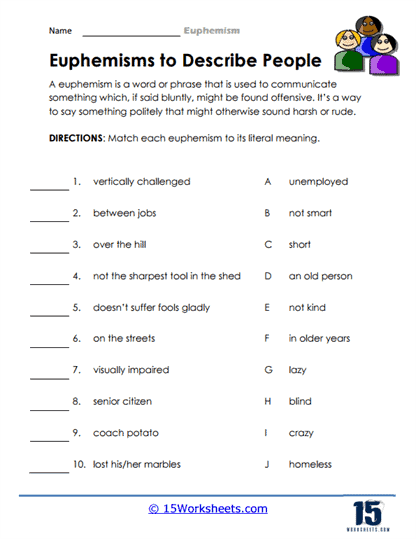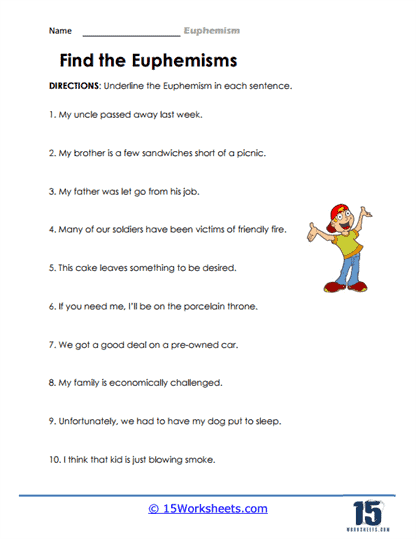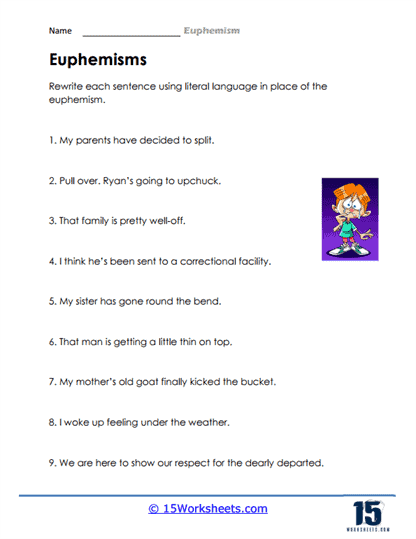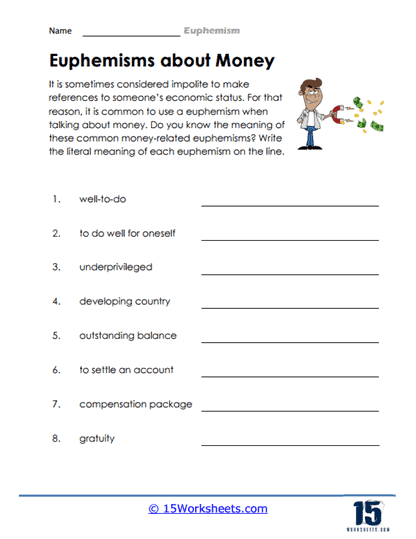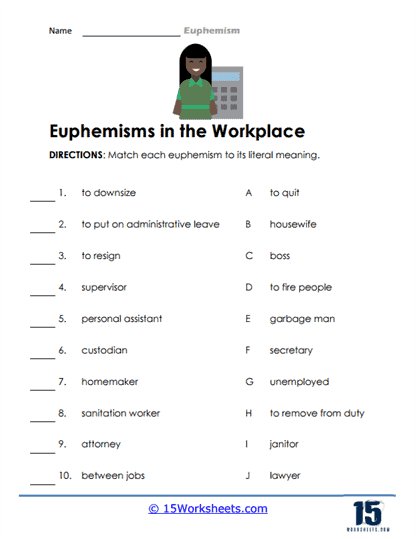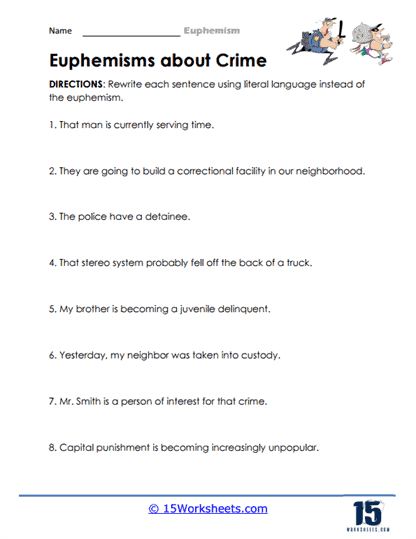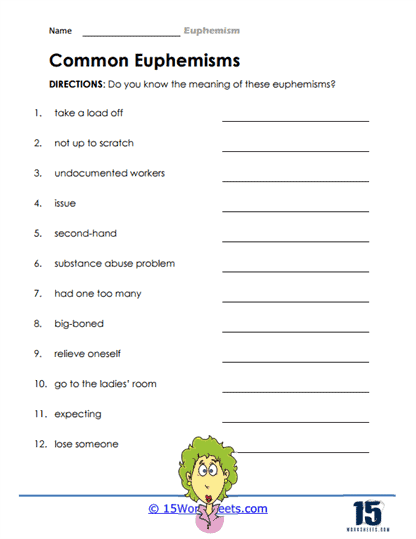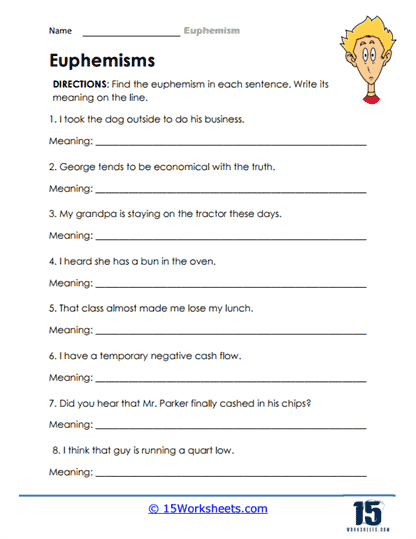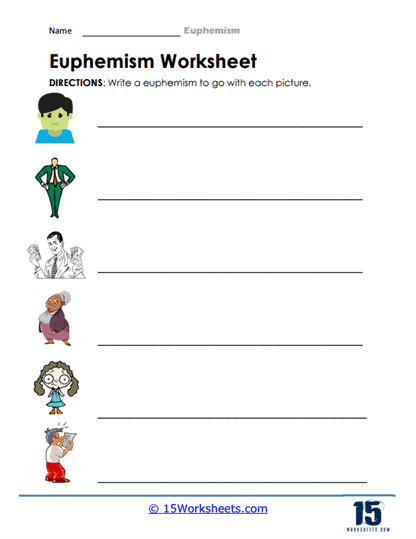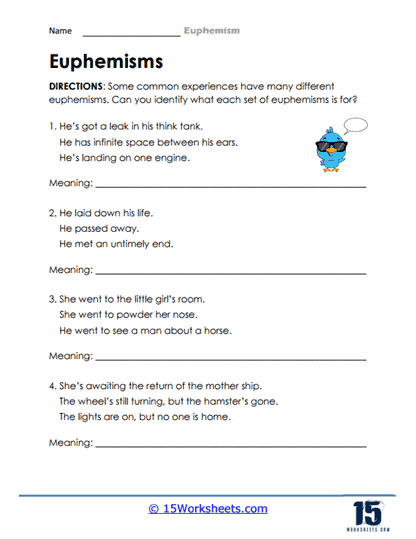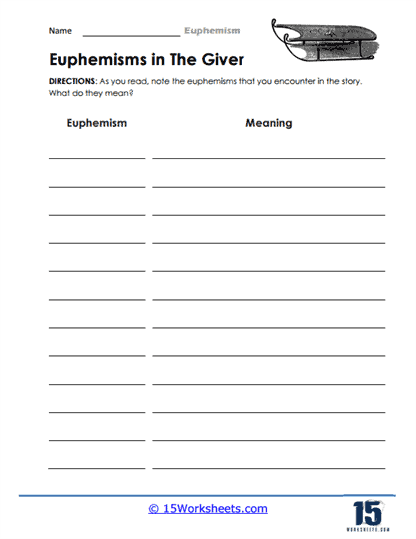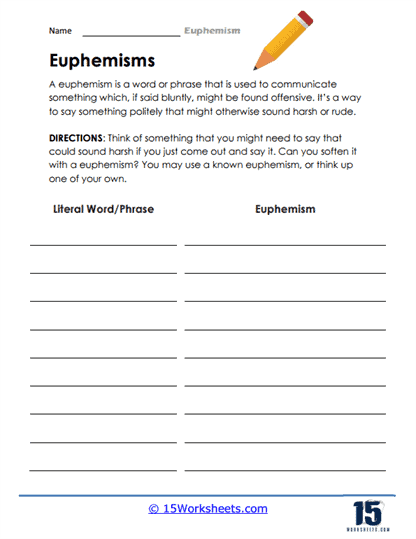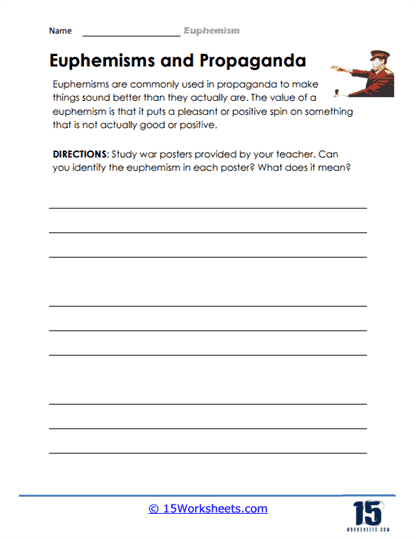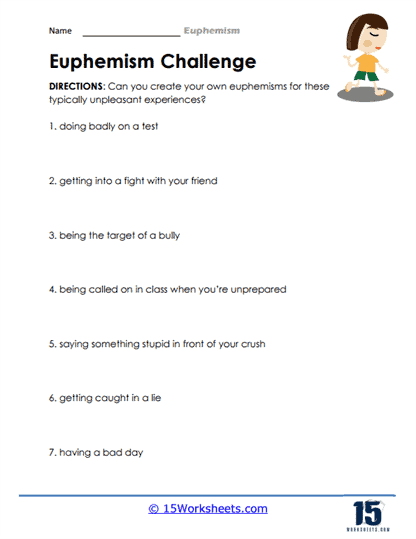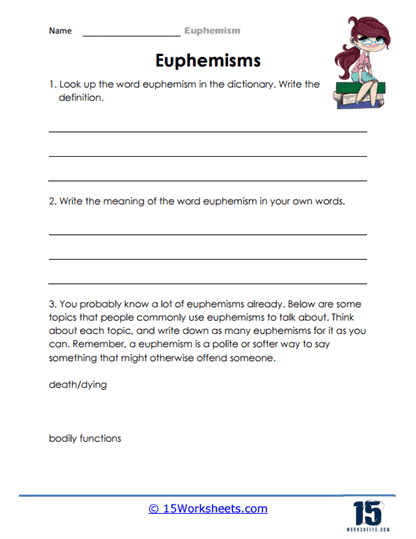Euphemism Worksheets
All About These 15 Worksheets
Euphemism, the use of indirect or mild expressions to substitute for words or phrases considered harsh, offensive, or unpleasant, is a fundamental element of language and communication. Understanding euphemisms is not only crucial for linguistic proficiency but also for effective and considerate communication. This collection of 15 worksheets is designed to introduce students to the world of euphemism, helping them grasp the importance of this topic, recognize its prevalence in everyday language, and utilize it appropriately in various contexts.
What Are Euphemism Worksheets?
“Euphemism” might seem like a big, strange word, but it’s actually a really neat thing we use in language all the time! You know when you say “passed away” instead of “died,” or “let go” instead of “fired”? Those are euphemisms! Euphemisms are words or phrases we use to talk about something uncomfortable or unpleasant in a nicer or more polite way.
These worksheets will help kids to better understand and identify euphemisms. They’re a great way to enhance language arts and critical thinking skills while helping children communicate in a more sensitive and considerate way.
You will find these types of exercises on these worksheets:
Identification – Kids would read sentences or short paragraphs and then identify the euphemism used.
Euphemism Match-Up – In this exercise, students would match euphemisms to their direct meanings. For example, they might match “passed away” with “died,” or “economical with the truth” with “lying.”
Usage – Kids might be asked to rewrite sentences using euphemisms, or write their own sentences that use a given euphemism. This helps students learn to use euphemisms in their own communication.
Discussion – Older or more advanced students might discuss why the euphemism was used instead of the more direct phrase, and how it changes the tone of the sentence. This can lead to interesting conversations about social norms and sensitivity in language.
These worksheets make learning about euphemisms not only educational but also fun and engaging. So, next time when you want to say something a bit unpleasant, you can use a euphemism to make it sound a bit nicer!
Why Do Authors Use Euphemism As a Literary Device?
A euphemism is a figure of speech – an indirect expression substituted for one considered to be too harsh, blunt, or offensive. Euphemisms enable writers and speakers to address taboo, sensitive, or otherwise uncomfortable topics in a more socially acceptable, polite, or less explicit manner. The use of euphemisms is a tool to avoid potential social awkwardness, rudeness, or controversy.
Euphemisms often come into play when dealing with topics like death, sex, bodily functions, violence, or any discussion where directness might be seen as uncouth. The main defining feature of a euphemism is its intended function of wrapping difficult or harsh realities in more comforting or approachable language.
Let’s look at three examples of euphemisms in literature to see how authors employ this literary device to engage readers:
In J.K. Rowling’s “Harry Potter” series
Here, we see an excellent example of a euphemism with the phrase “He-Who-Must-Not-Be-Named” used to refer to the primary antagonist, Voldemort. His name is considered so dreadful and instills such fear that characters prefer to use this euphemistic phrase rather than say his name outright. This euphemism builds a sense of fear and dread around Voldemort, amplifying his character’s threatening nature without explicitly detailing his acts of violence.
In George Orwell’s “1984”
The totalitarian regime in Orwell’s dystopian novel employs euphemisms as a form of language control, most notably in the names of various government ministries. The Ministry of Peace deals with war, the Ministry of Love oversees torture and brainwashing, and the Ministry of Truth engages in propaganda and historical revisionism. These euphemistic titles obscure the reality of these institutions, providing a critique of political language and demonstrating how words can be used to manipulate perception and control society.
In Ernest Hemingway’s “A Farewell to Arms”
Hemingway uses euphemisms to deal with the sensitive subject of death. A notable example is the phrase “He has checked out” as a replacement for saying a character has died. Hemingway’s euphemistic language allows readers to approach the harsh realities of war with some emotional distance, reflecting the detachment and desensitization experienced by many in the face of war’s atrocities.
Exploring the world of euphemism through this collection of 15 insightful worksheets offers students an opportunity to develop essential skills in polite communication, linguistic awareness, literary analysis, cultural sensitivity, and creative language use. Euphemisms play a vital role in language and society, enabling individuals to navigate delicate conversations with sensitivity and finesse. By engaging with these exercises and activities, students not only enhance their communication skills but also gain a deeper understanding of the complex interplay between language, culture, and social norms. The benefits of studying euphemism extend far beyond the classroom, equipping students with valuable tools for successful communication and cultural competence in an increasingly diverse and interconnected world.

